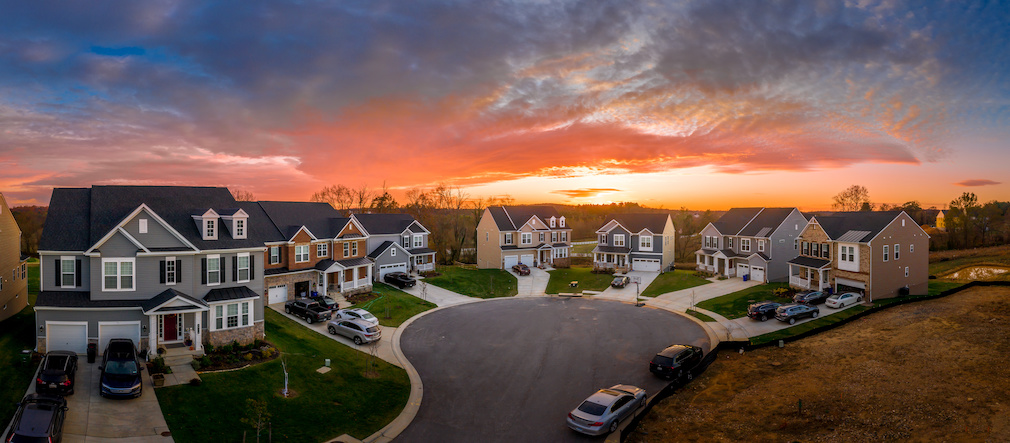Recently, a new startup claimed it could get Americans into a home without requiring a mortgage.
But as we looked into Fleq, which launches in Pittsburgh, there seemed to be more questions than answers. How much of a premium will Fleq charge for rent? What will the risk profile of its buyers be? Has the company overestimated the demand from Millennials for an alternative mortgage solution?
The company explained that a mortgage is a way to purchase a home, while Fleq is a completely different way to experience homeownership.
So we sat down with Fleq Founder and CEO Todd Sherer to get some of those questions answered.
HousingWire: How will eligibility for the program be determined?
Todd Sherer: Our underwriting guidelines are proprietary. However, I can tell you that we are far more concerned with income and past payment history than a credit score.
HW: Are you concerned at all for the risk level of the purchases? Why or why not?
TS: We expect to get membership requests from customers with all types of credit profiles and it is important to be careful when adding member partners. However, private equity firms have purchased trillions of dollars of real estate to rent, and their vacancy rates are in the low to mid-single digits. This means there are lots of people who are successful renters, which is one of our primary eligibility factors. Fleq believes that with the right product many of these successful renters could be transitioned to successful homeowners.
HW: What will be the premium charged for rent?
TS: Rents are intended to be market rents. Rent is simply the amount charged for our members to be tenants in the home that we have partnered to purchase.
HW: Does the rent charged go toward the purchase of the home, or is it a separate payment?
TS: It is a separate payment. Fleq is not a rent-to-own model.
HW: What makes you think Millennials are hungry for an alternative mortgage option?
TS: The homeownership rate of Millennials between the ages of 25 and 34 was 37% in 2015, approximately eight percentage points lower than the homeownership rate of Gen Xers and Baby Boomers at the same age. Clearly, something about home buying does not appeal to them.
Many firms are trying to improve the affordability of homes and the attainability of mortgages, and that is great, but we believe that the barriers to homeownership go a bit deeper. We think that there is a growing aversion to many of the aspects of traditional homeownership (debt; length of commitment; large up-front expenses; and the costs and hassles associated with home maintenance – to name a few.) That is why we designed Fleq to not only offer an alternative to debt-based financing, but also address the other factors.
In our view, there are six barriers to homeownership: affordability, attainability, sustainability, portability, flexibility and convenience. Fleq solves for all of these.
HW: If buyers are paying extra to Fleq for rent, how does it benefit buyers to not have mortgage interest?
TS: Buyers are not paying “extra” to Fleq for rent. Our model changes the entire landscape of the benefits and burdens of homeownership and cannot be thought of along traditional lines. With a mortgage, a borrower pays principal and interest on a scheduled rate for a scheduled period of time. They pay 100% of the taxes, insurance and costs of repairs, as well as having to spend time to find a qualified electrician or plumber. And if property values go down, who takes the loss…the borrower alone until their equity is wiped out.
With Fleq, you have two roles. One as a partial owner and one as a tenant. As a tenant, you pay rent, but you only pay market rent on the portion of the home you don’t own. If you own 5% of the partnership, your monthly payment for rent is 95% of the market rent. If you buy more equity, your rent payment drops the next month. Additionally, because you are renting, you get a dedicated property manager to handle the hassles of any needed repairs.
But unlike renting, you have control of the dwelling. You choose how the home is painted and whether you have three cats, you get to act like the homeowner you are.
As a partial owner, you still have the ownership costs like taxes, insurance and repairs, but you are only responsible for your ownership share of those costs. For example: let’s say you have an 8% equity stake in the home when the septic line fails and it will cost $1,000 to repair. Because you own 8%, you will pay $80 dollars of that cost. The remaining $920 is covered by Fleq. The same goes for property taxes.
Interest is not necessarily a bad thing, but for generations drowning in debt, adding more debt negatively impacts their credit score which could prevent them from buying a new car or getting favorable terms on the loan or lease. With Fleq, no interest really means no debt. From day one you own real equity in an asset and if the value of the home goes down, it goes down for you and Fleq based on our proportionate ownership.
HW: What is the biggest difference between using Fleq and taking out a mortgage?
TS: A mortgage is a way to purchase a home. Fleq is a completely different way to experience homeownership.






